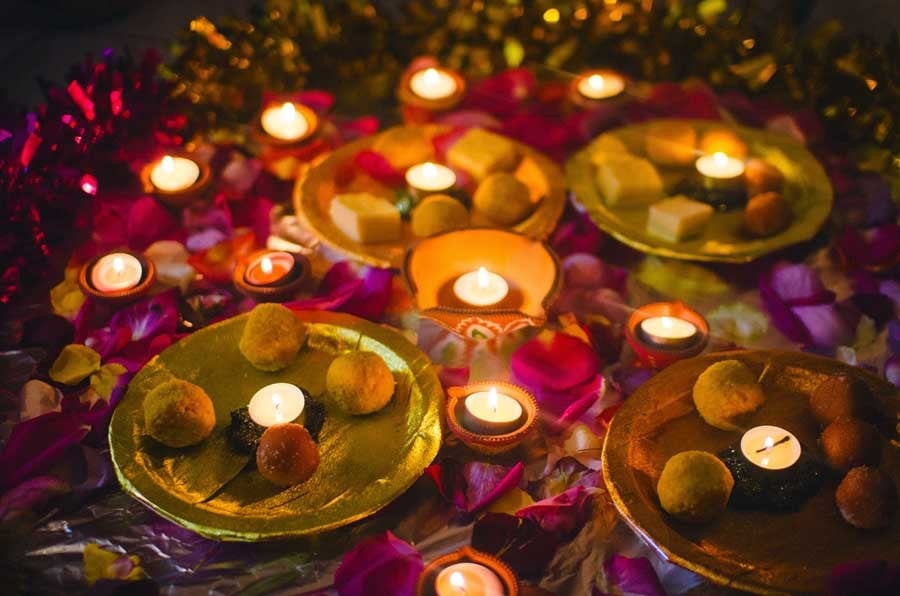
Quite a few rituals and traditions have faded away with time, only to be replaced by new ones

Picture this. A bridegroom wearing a tight-fitted golden sherwani straddled on a white decorated horse, and surrounded by a spirited crowd. Amid the deafening soundof the trumpets and bajas, the baraat is moving slowly and is a few yards from the bride’s house in the street. In a second, the happy but calm crowd turns into chaos as someone, a close relative of the bridegroom, tosses out a handful of coins before the crowd. The younger lot from the crowd suddenly discovers a purpose in life. They dash forward to pick up the coins, not minding a push or a bruise in the process. The practice is repeated a few times until the bag carrying coins is empty.
This is a bright mid day in late winters, in the mid 1980s. As a young boy, I still remember envying those lucky kids, and the anguish of not being allowed to participate in this joyous abandon.
As we grew up, the practice of tossing coins was replaced by currency notes of various denominations, depending on the financial status of the groom. Later, socio-economic changes in the society also brought about changes in the way people celebrated their weddings. The horse was replaced by a car, the latest model, lavishly decorated with rose-buds, flowers, and other glittery materials.
As if going in circles, a bridegroom coming on a white horse to claim his bride is in fashion again, though with a slight change; the single horse is replaced by a very-well decorated buggy drawn by two horses.
Noton wala har, a garland made of currency notes, instead of flowers, remained a synonym of prestige and wealth of the bridegroom and his family for quite some time. The bigger the garland, the larger the impact. Someone from among the relatives even took notice of the currency denomination and compared that with other garlands in the relatives’ weddings that happened two weeks ago.
The band baja walas, hardly a part of weddings these days, were a basic ingredient of the whole affair till the 1990s. The leader of the band, masterfully performing with a big stick in his right hand, drew attention as did others with big drums and brass instruments. Friends and close relatives of the bridegroom were a sight dancing enthusiastically to the beating of the drums. That is a rare sight these days.
So what are the rituals and traditions that we have lost? Cultural commentator, Ally Adnan, traces a few that dominated the weddings in this part of the world over much of the last century. Most of these traditions have died down over the years while others are scarcely practised today.
He specifically mentions Suhaila Geet, a song sung for the bride a few days before the wedding day. "Suhaila geet would be sung by qawwals after the bride would be separated from others and confined to a room so that she did not come under the spell of an evil eye," he says. "It was like a guidebook for the bride to know how to take care of the bridegroom, even cast a spell on him. This was in practice till about a hundred years ago and faded away later."
The presence of "domni girls" was a must at some weddings those days. "Domni girls were one of the twenty five kinds of prostitutes, it is said. They would sing songs for both men and women and deliver messages from men’s quarters to women and vice versa as there was no concept of a mixed gathering," he informs.
Sehra was another narration sung or narrated in praise of the bridegroom on the day of the baraat. "It would be written on a golden paper called vellum and distributed among guests on the occasion," he explains.
Gana bandhna was another ritual that is hardly performed these days. "On the wedding day, the bride and the groom would try to pull the gana towards each other with a string. The gana was a small packet that contained chhalia and turmeric -- chhalia was believed to be an aphrodisiac while turmeric helped sooth aches in the body as a result of having sex," he adds.
Mustard oil-spilling at both the corners of the doorstep, tail chona, was a ritual which was an integral part of a wedding up until a few decades ago, "Spilling oil on the doorstep was considered a necessary act to ward off evil from the bride and the bridegroom."
Bhands (entertainers) are nowhere to be seen these days at weddings. In the 1980s and even later, they were always there at the right time and place. Bhands would take liberty and cut jokes on the audience present on the baraat or walima day. Even the bridegroom and his close relatives were not spared but all of it was done in a light vein. Nobody would take offence.
Also read: Editorial
Jahez wakhala (displaying the whole dowry in the courtyard for a couple of days before the wedding) was perhaps taken as a reflection on one’s well-being and financial status in the society. While it may still be in vogue in certain far-off villages, the ritual is certainly not in practice in the cities.